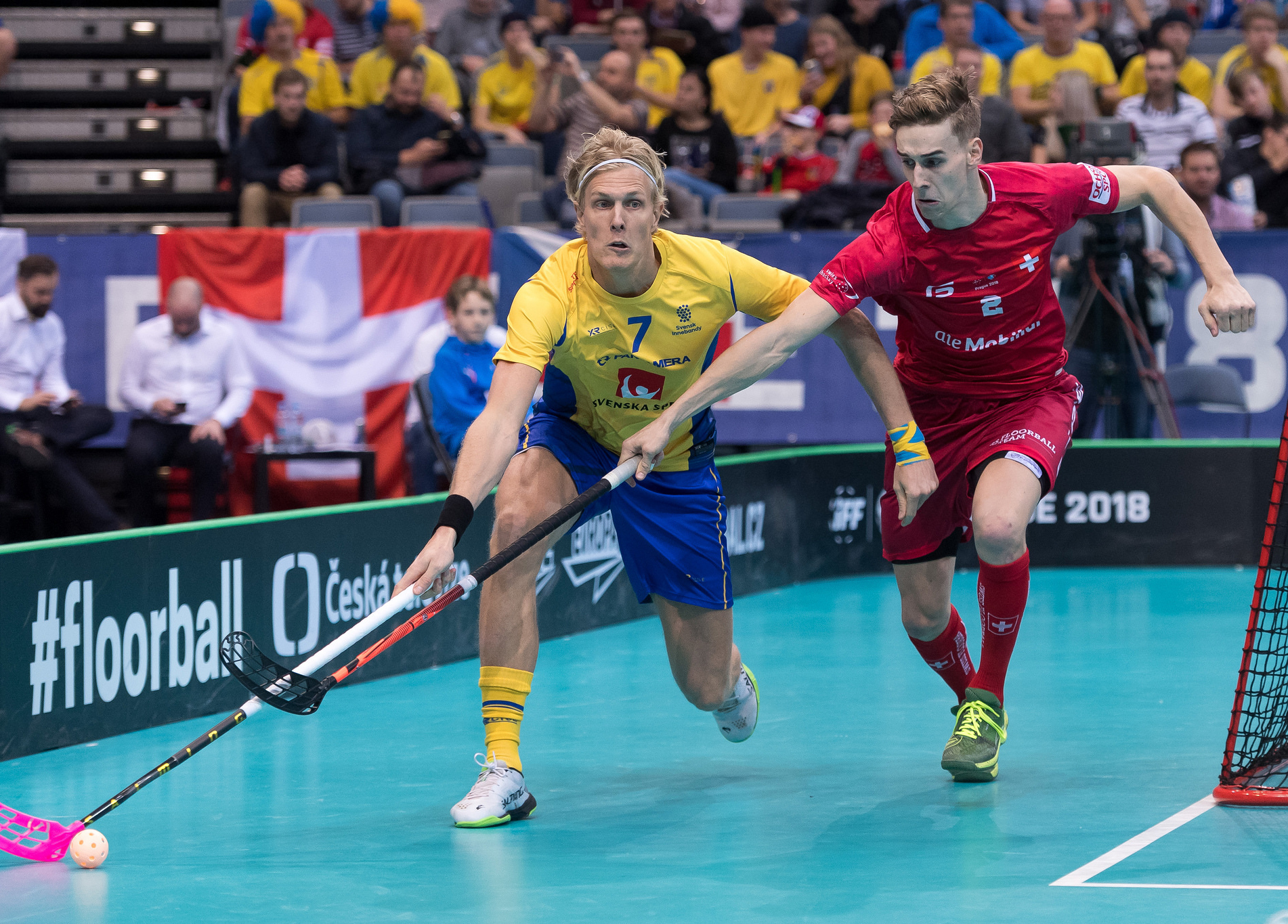
Data Analysis: Sweden vs Switzerland 5:4 ps. – 11.12.2018

Penalty shootout decided about the advancing team to the 2018 WFC Finals in the game between Sweden and Switzerland. What kind of a game was this one? This article is trying to answer that with a help of analyzing data from the game.
Correct approach could be splitting the game in two parts. In the first 41 minutes there was very even game to be seen and the score was tied after Mendelin equalized to make it 3:3. Next almost 30 minutes were in favor of Swedish team despite a need to come back late in the game.
There were 6 dangerous possessions created on both sides in the first 41 minutes and the game was pretty tight defensively. Offensive maneuvers exploded in the third period and in particularly Sweden had more looks (11-4 in dangerous possessions) than scoring only one goal. 4-2 was a difference in overtime and Swiss goalkeeper Meier received his deserved praise during and after the game.
One might say Switzerland deserved to be in the game until last moments, Sweden deserved to win at the end.
Also first and second period were different. Sweden controlled the game more in the first creating 4-1 advantage in possessions with clear path opportunity, Switzerland countered with one odd man rush (and only one in the game for them). Switzerland was happy with 1-1 score but could not be happy with 2-1 (for Sweden) score in the second period. The reason is Switzerland was more dangerous than Sweden. Not with a big margin but Swiss team had 1-3 differential in clear path possessions and Sweden countered with one odd man rush.
For most of the third period and overtime Sweden shortened the bench and that might help too in creating positive differential in dangerous possessions. The game opened both sides and 10-6 was a score of clear path possessions for Sweden. One more asset was added to Swedish offence, odd man rushes. Sweden was able to yield 5 odd man rushes and if only their efficiency is at their standard rate the game could have gone in their favor earieir. It eventually went in penalty shootout.
Part of the success for Switzerland preventing good opportunities against in the first two periods was their active forechecking. This is nothing new as they were a team with the highest pressure in games since the start of the tournament. Next gif gives an example.
Maurer (no. 11) is trying to divide Swedish defenders and is able to yield a turnover here. There were not too many turnovers for Switzerland in such situations though and we may assign this one more to individual mistake.
56:40 was a time for Swiss goal to make it 3-4 for the underdog. Sweden tied it up at 58:16 with a goal from Sjögren who was assisted by Rudd on this play.
Game of inches. Notice how the ball finds its way between the legs of Svahn (no. 70) and between the left leg and the stick of Hofbauer (no. 19).
As stated overall Sweden had more dangerous possessions and therefore its players are located in the next graph in upper right corner.
“Storvreta” line (Nilsbert, Gustafsson, Sjögren, Svahn and Rudd) as nicknamed at the WFC was dangerous in odd man rushes despite not finishing one with a goal. When Nilsson was on the field there was very strong (+7) clear path opportunity differential for Sweden. Also both Mattias and Johan Samuelsson finished with good results in this regard. Only two players for Switzerland with neutral dangerous possessions differential were Mendelin and Zaugg.
Last graph belongs to shooters and passers of the game at even strength.
Nilsson had 12 shot attempts and scored one goal. Galante Carlström had 10 shot attempts and did not score. Both they might expect more to be finished successfully from them. Rudd sent 10 assists including the one for 4-4 tying goal and was followed by Johan Samuelsson. It was a defender Bischofberger with 4 shot attempts and 5 assists as the most frequent finisher for Switzerland.
By Petr Malina
WFC 2018 in facts and figures – 10.1.2019
Data Analysis: WFC Summary – 12.12.2018
Data Analysis: WFC Summary – 12.12.2018
Data Analysis: Finland vs Sweden 6:3 – 12.12.2018
Data Analysis: Sweden vs Switzerland 5:4 ps. – 11.12.2018
Data Analysis: Czechia vs Switzerland 2-4 – 11.12.2018
Final Day of WFC: Gold Goes to Finland, Silver to Sweden, Switzerland Takes Bronze, Czechs Again without Medal – 9.12.2018
Pascal Meier is the MVP of WFC 2018 – 9.12.2018
WFC 2018 All Star Team – 9.12.2018
Finland Beats Sweden 6:3 to Defend World Champions Title – 9.12.2018
Switzerland Overcomes Czech Republic to Win Bronze Medals – 9.12.2018
Another spectator record broken! – 9.12.2018
Data Analysis: Czech Republic vs Finland 2-7 – 9.12.2018
Latvia Beats Germany to Earn 5th Spot – 9.12.2018
Norway Again Outplays Denmark to Finish in 7th Place – 9.12.2018
DAY 9: Grand Finale Is Here! New Champions to Be Crowned Today! – 9.12.2018
Day 8 Summary: Sweden and Finland in Final Again, Switzerland and Czech Republic to Play for Bronze – 9.12.2018
Sweden Becomes Second Finalist after Thrilling Shoot-out Win – 8.12.2018
Finland Defeats Czech Republic Thanks to Brilliant Scoring Efficiency – 8.12.2018
Germany Beats Denmark 4-2 to Fight for 5th Place Tomorrow – 8.12.2018



































